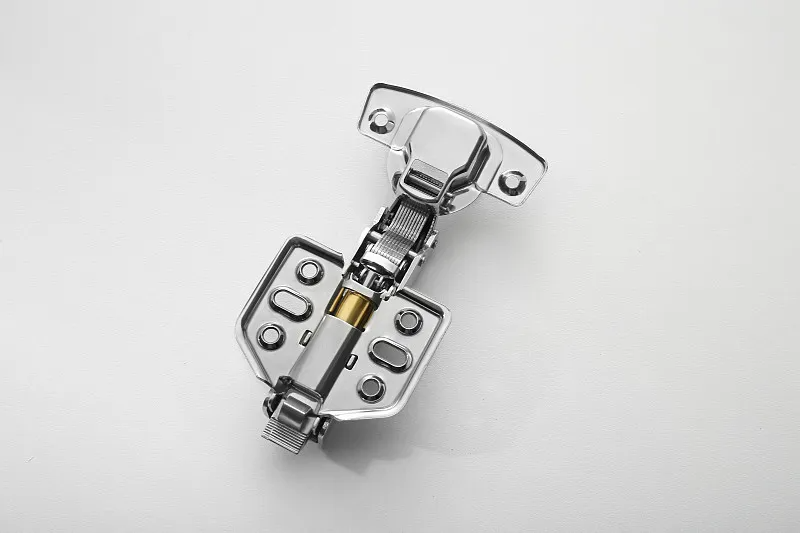The Essential Guide to Hinges: Types, Trends, and Market Insights

When it comes to installing cabinets, the most important hardware for the cabinet is undoubtedly the hinge.
What is a Hinge?
A hinge serves as a vital connector between the cabinet door and the body, acting as an angle limiter when opening and closing the cabinet. It is akin to the knee and elbow joints in the human body.
The hardware market is brimming with an array of hinge varieties, offering a multitude of styles and functionalities. With product innovations in major hardware markets, choosing the right hinge can be quite challenging.
Common Types of Hinges
Butterfly Hinges
Butterfly hinges are the most common type, known for their simplicity and practicality. They typically come in three installation methods: full cover, half cover, and concealed, catering to the opening and closing needs of various furniture doors.
Made from cold-rolled steel, butterfly hinges feature a sprayed surface treatment, offering high rust resistance. Their load-bearing capacity is moderate, suitable for ordinary cabinet doors and drawers.
For cabinets that do not require frequent opening and have no strict noise requirements, this type is more cost-effective.

Spring Hinges
The distinctive feature of spring hinges is their automatic rebound when the door opens to a certain angle, reducing the steps to lock the cabinet while achieving excellent sealing.
Made from high-quality alloys, these hinges not only have good load-bearing capacity but also possess excellent corrosion resistance.
They are suitable for kitchen cabinet doors, bathroom cabinets, and other places that require frequent opening and closing. The automatic rebound feature makes operation more convenient and enhances the user experience.

Dampers Hinges
Dampers hinges are widely used in the home market, providing a smooth buffering effect when the door opens and closes. They effectively reduce the collision noise and impact between the door and the cabinet, making the door closing sound much quieter.
For places that need to maintain a quiet environment, such as bedroom wardrobes and study bookcases, hydraulic dampers hinges are recommended.
Dampers hinges not only enhance the grade and comfort of furniture but also effectively extend the service life of furniture.

Specialty Hinges
There are many types of specialty hinges on the market, such as 165-degree wide-angle hinges
While regular cabinet doors can only open to 90 degrees, with wide-angle hinges, the opening angle can become much larger, making them suitable for more spacious environments.
There are also quick-install hinges, which are convenient for those who frequently move or like to change their home layout. They are easy to disassemble and stable.
For those with aesthetic requirements for hinges, the market also offers carved European-style hinges and transparent hinges.
Specialty hinges are not a separate type of hinge; they can be butterfly-style or dampers hinges and are new characteristics derived from demand.

Hinge Market Size
Global: The global hinge market is expected to reach 12 billion USD by 2024, with a compound annual growth rate of about 4%.
North America: North America is the largest hinge market globally, with an expected market size of 4 billion USD by 2024.
Europe: Europe is the second-largest hinge market globally, with an expected market size of 3 billion USD by 2024.
Asia-Pacific: The Asia-Pacific region is the fastest-growing hinge market globally, with an expected market size of 2.5 billion USD by 2024

Drivers of Hinge Hardware Growth
Global Furniture Market Growth: With the global population increasing and urbanization accelerating, the furniture market continues to grow, driving the demand for hinges. Home Renovation and Remodeling Demand: As more home renovation and remodeling projects are undertaken, the demand for hinges also increases. Pursuit of Aesthetics and Functionality in Home Furnishings: Consumers are increasingly focusing on the aesthetics and functionality of their homes, leading to higher demands for hinge quality and design.

Trend Analysis of Hinge Demand
Dampers Hinges: Dampers hinges, which cushion the closing action and provide a quiet and comfortable experience, are gaining more consumer favor. Quick-Install Hinges: Quick-install hinges, which are easy to install without screws, are convenient for DIY enthusiasts, and their market demand is growing. Hidden Hinges: Hidden hinges enhance the aesthetics of furniture and are increasingly favored by designers and consumers.

Online Consumer Analysi
What Consumers Want: High-quality, durable, aesthetically pleasing, and easy-to-install hinges that meet the needs of various furniture and door panels.
What Consumers Like: Dampers closing, quiet comfort, quick-install design, and hidden-style hinges that enhance the quality and user experience of furniture.
Consumer Needs: Solving issues of door panel opening and closing difficulties, noise, and installation troubles to improve the quality and user experience of furniture.
Consumer Portrait: Mainly furniture manufacturers, home decoration companies, and DIY enthusiasts who focus on product quality, functionality, and cost-effectiveness.
Usage Scenarios: Cabinets, wardrobes, room doors, and various other furniture and door panels.
Unmet Needs: Smarter and more automated hinges, such as those that can automatically adjust opening angles and close automatically.
Positive Reviews: Easy installation, smooth operation, quiet comfort, and durable reliability.
Negative Reviews: Some products have quality issues, such as rust and breakage, and some products have non-standard installation sizes.
Purchase Motivation: To improve the quality and user experience of furniture and solve issues of door panel opening and closing difficulties, noise, and installation troubles.
